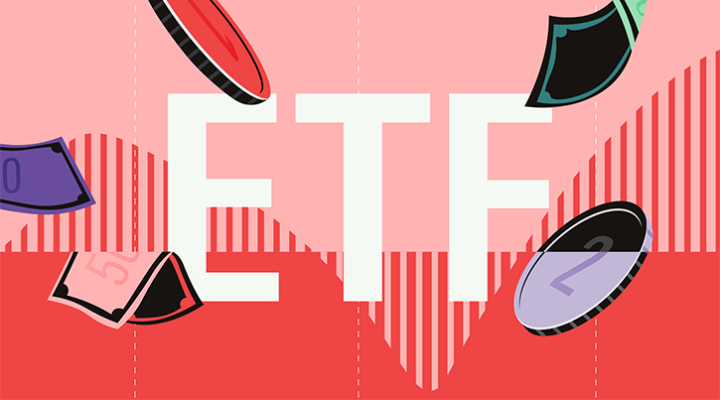The dust has settled on a turbulent 18 months in the tobacco industry, during which material excise tax increases and smoking bans were implemented in several markets across the world. The ability to raise prices is the key to earnings growth in the tobacco industry, and while these measures negatively impacted volumes, we continue to believe that the pricing power of the leading manufacturers remains intact. The market appears to agree, with tobacco stocks rising by an average of more than 20% during the last six months, outperforming the 9% increase in the S&P 500 and the 12% gain seen on the FTSE 100. Although we anticipate little upside to the stocks at current levels, dividend yields on tobacco stocks are running in the mid-single digits. We think dividend investors with the stomach for "fat tail" risk--the risk that a significant but low-probability event could materially damage profitability--should still find tobacco stocks attractive in today's low-interest-rate environment.
Tobacco is Conducive to Wide Moats
Tobacco markets are fairly concentrated, with a small number of large players benefiting from significant economies of scale and generating high returns on invested capital. The addictive nature of tobacco products and strong brand loyalty has produced a category characterised by relatively stable market shares but significant barriers to entry for smaller players and new entrants. Scale advantages are difficult to replicate since new entrants would need to build manufacturing and distribution capabilities, and, in the United States, would also be required to set cash aside for product liability damages, either by signing up to the Master Settlement Agreement (MSA) or by setting aside cash in escrow for product liability penalties. These factors, in addition to the strength of incumbent brands, act as deterrents to new entrants.

Furthermore, manufacturers are the big winners in the tobacco industry. With few substitutes to tobacco products, a fragmented farming industry, and an oligopolistic industry structure, manufacturers claim the lion's share (around 77%) of after-tax retail revenues.
Old Risks Still Linger
One of the reasons investors shy away from investing in the tobacco industry is out of fear that regulation will accelerate the decline in smoking rates, thus denting earnings growth or even driving the industry out of business. Regulation is an omnipresent risk in any industry that produces a harmful product. In the tobacco industry governments have a range of regulatory weapons at their disposal, some of which are more effective than others. Smoking bans in public places, for example, have become commonplace in recent years, and we think this trend will continue as bans spread through developing markets. Although bans are an inconvenience for smokers, they do little to damage demand.
In the United States, the Food and Drug Administration (FDA) was recently appointed the governing body responsible for the regulation of the tobacco industry. To date this regulation has taken the form of bans on tobacco flavours and increasingly alarming health warnings on cigarette packs, and we expect further regulation down the pike. In such a heated regulatory environment, Lorillard (LO) has the most to lose, in our opinion. A panel is investigating claims that menthol cigarettes are more harmful than non-menthol cigarettes. Although we think a menthol ban is highly unlikely, with more than 90% of its revenue generated in the menthol category, such a measure would be catastrophic for Lorillard. We think the worst-case scenario for the industry would entail regulatory action being forced upon manufacturers that reduces the amount of nicotine in cigarettes. However, given how important this addictive component is to tobacco sales, the FDA would undoubtedly face industry pressure from such a measure. Just as smokers are addicted to tobacco companies' products, governments are addicted to the tax revenue the products generate. We estimate that total excise tax and MSA payments will be well around $40 billion in 2010, or around 1% of all local, state, and federal taxes collected, and around two thirds of all excise tax receipts. In the case of the MSA payments to states, the states have in many cases already securitised those revenues, and therefore are heavily reliant on the payments being made.
Outside the US, countries including Scotland and Finland are clamping down on in-store displays of cigarettes. We do not expect this to impact industry demand, but it will make it harder for manufacturers to communicate with the consumer, and will render price promotions less effective. We think the industry leaders will actually benefit from such a move because it is likely to cement current market shares into place.
We are concerned, however, about the impact of plain packaging, a proposal currently being considered in Australia and the UK. The removal of brand identity from packs is not likely to hurt demand but could encourage trading down to discount brands. A negative mix impact would be detrimental to all manufacturers, but a solid presence in discount categories should cushion the blow for British American Tobacco (BATS) and Imperial Tobacco (IMT).
Another significant risk facing the industry is the threat of litigation, which continues to be a threat, particularly in the United States. However, the decertification of the Engle progeny case (a large class action lawsuit) was a big win for the tobacco industry because financial penalties awarded in individual cases will be more spread out over time. Florida courts have found in favour of the tobacco industry in six consecutive Engle cases in recent weeks, but we do not think this marks a turnaround in the industry's fortunes in the courtroom. We still expect the industry to win some and lose some of these cases, but we expect manufacturers to be able to pay any penalties from the strong free cash flow they generate.
Pricing Power Remains Robust
The last two years have been challenging for the tobacco industry. Excise taxes on both sides of the Atlantic, the spread of smoking bans, and a deep recession have put pressure on smokers to quit. In mature markets, consumption declined at an above-historical rate in 2009 of around 9% in the US, above the historical rate of around 3%. Even in Eastern Europe, a market that grew 3% in 2008, industry volumes fell 2% and trading up reversed.
Nevertheless, despite the perfect storm that unfolded in 2009, cigarette manufacturers' pricing power remained intact. Manufacturers can still raise prices at a faster rate than volumes decline, creating revenue and earnings growth. In international markets, Philip Morris International (PM) raised prices at a rate of 4 times its decline in volumes. In the US, historical price elasticity appears to be holding steady at around -0.3, as retail price increases in the high-20% range caused a 9% decline in industry demand. While this relationship between price and demand holds, we expect manufacturers to be able to steadily increase revenue, even in markets where consumption is falling.
Now that the worst seems to be behind the tobacco industry, we think pricing is becoming more rational, which bodes well for future industry profitability. Some manufacturers, most notably Reynolds American (RAI) lowered prices when the federal excise tax increase was implemented in April of 2009, and in the aftermath, used temporary price promotions to grab market share. However, while Reynolds' market share increased at the expense of industry leader Altria (MO), the strategy failed to deliver revenue or earnings growth, and Reynolds has since become more rational on pricing. We now expect the industry to maintain a rational pricing strategy in the medium term, and this should facilitate steady earnings growth for the major players.
International Markets Still Offer Growth Potential
Overseas, emerging economies such as Eastern Europe, Africa, and parts of Asia still offer growth opportunities. Smoking in those regions is rising, driven by growing populations and weak restrictions on smoking. The World Health Organisation estimates that even if the proportion of the global population that are smokers declines by 1% a year, there will still be 1.5 billion smokers by 2050, up from 1.3 billion today. Furthermore, some of the least penetrated international markets are those where populations are growing fastest, smoking restrictions are weakest, and the infrastructure has significant room for improvement. Litigation risk is lower in many overseas markets than it is in the US because class action lawsuits are less popular, and the process of bringing cases to court is often more expensive and cumbersome. In addition, there has been a long-term trend of trading up to premium brands in emerging markets. This has created a positive mix effect for those companies with the strongest premium brands such as Philip Morris International and British American, both of which generate more than one-third of their revenue from emerging markets.
Despite Run-up, Dividends Still Attractive
We think the recent rally in tobacco stocks reflects the market's appreciation of the improving fundamentals of the tobacco industry. On average, tobacco stocks under Morningstar's coverage are trading at our fair value estimates. Nevertheless, dividend yields are still attractive as they far exceed those offered by 10-year treasuries or gilts, and earnings growth through higher prices, cost savings, and share repurchases should ensure that dividends are maintained.
Of the companies under our coverage, we think Altria has the widest moat within the US industry. In addition to Marlboro, Altria also has the leading discount brand, Basic, so it should be well-positioned to benefit from both short-term down-trading and long-term up-trading. Altria owns the two leading smokeless brands, Skoal and Copenhagen, which are helping the company migrate smokers to other tobacco products as they attempt to quit. We think the best way to exploit the growth opportunities in international tobacco markets is with an investment in the industry leader, Philip Morris International. The firm owns Marlboro in international markets, the only true global brand, and its product portfolio is skewed toward the premium category. While that may cause some short-term headaches as smokers continue to look to the value proposition, it should position the firm for solid long-term growth. Philip Morris has a strong presence in emerging economies, and it is the price leader in most of its core markets. The company generates industry-leading free cash flow close to 30% of revenue and returns on invested capital above 30%.


























